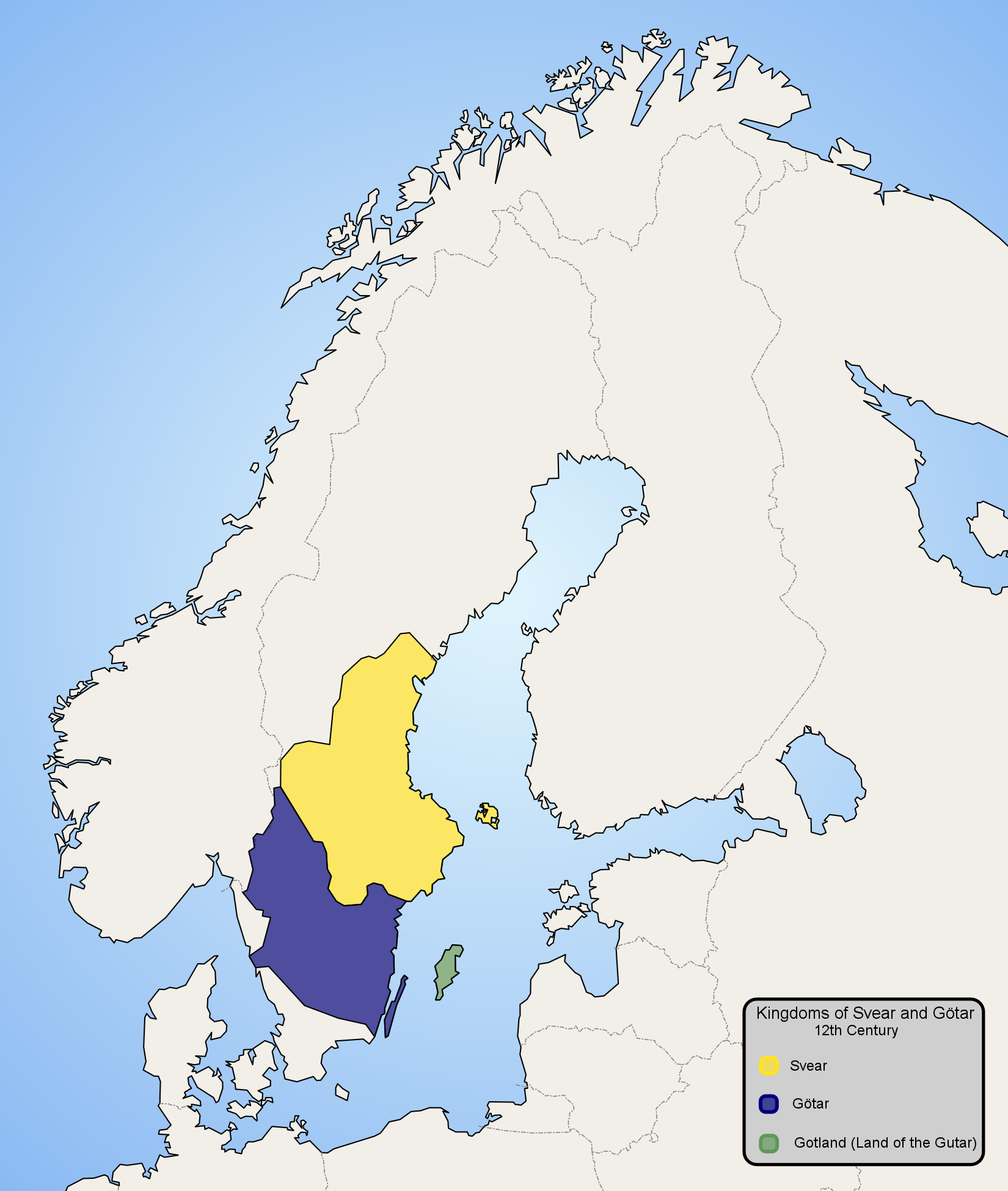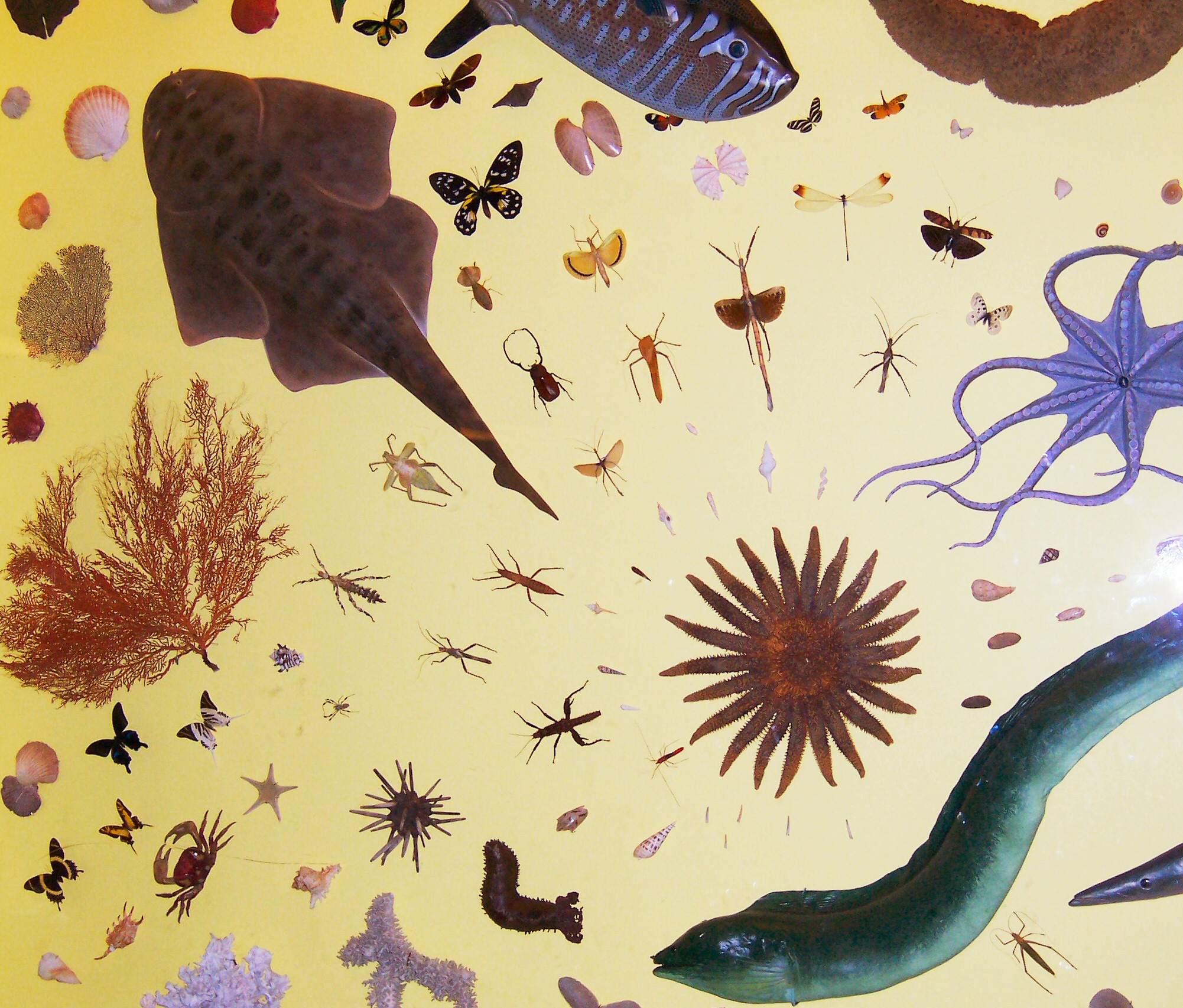|
Glyptagnostus Reticulatus
''Glyptagnostus reticulatus'' is a species of agnostid trilobite belonging to the genus '' Glyptagnostus''. It existed during the Paibian Age ( million years ago) of the Cambrian. It has a cosmopolitan distribution and is an important index fossil in biostratigraphy. It was characterized by an unusual net-like pattern of furrows on both the cephalon and the pygidium. Description Like all members of the suborder Agnostida, ''Glyptagnostus reticulatus'' is completely blind and only has two thoracic segments. The cephalon and pygidium are more or less the same size and shape ( isopygous). The glabella of the cephalon has two lobes. The front lobe is roughly squarish in shape, while the rear lobe is elongated and split along the middle. The cephalon has a narrow well-defined border. The pygidium has a long tapering central axis which can be divided into three lobes. The axis is connected to the rear margin by a central furrow. At both sides of the axis are a row of four or more pits ... [...More Info...] [...Related Items...] OR: [Wikipedia] [Google] [Baidu] |
Paibian
The Paibian is the lowest stage of the Furongian Series of the Cambrian System. The Paibian is also the first age of the Furongian Epoch of the Cambrian Period. It follows the Guzhangian ( Miaolingian series of the Cambrian) and is succeeded by the Jiangshanian Stage. The base is defined as the first appearance of the trilobite '' Glyptagnostus reticulatus'' around million years ago. The top, or the base of the Jiangshanian is defined as the first appearance of the trilobite '' Agnostotes orientalis'' around million years ago. GSSP The name is derived from Paibi, a village in Hunan, China. The GSSP is defined in the "Paibi section" ( Wuling Mountains, Huayuan County), an outcrop of the Huaqiao Formation (花桥组). The base is the first occurrence of '' Glyptagnostus reticulatus'' which is 396 m above the base of the Huaqiao Formation at the type locality (). Major events At the turn of the Guzhangian and Paibian ages, an extinction event occurred that reduced ... [...More Info...] [...Related Items...] OR: [Wikipedia] [Google] [Baidu] |
Somite
The somites (outdated term: primitive segments) are a set of bilaterally paired blocks of paraxial mesoderm that form in the embryogenesis, embryonic stage of somitogenesis, along the head-to-tail axis in segmentation (biology), segmented animals. In vertebrates, somites subdivide into the #Dermatome, dermatomes, #Myotome, myotomes, #Sclerotome, sclerotomes and #Syndetome, syndetomes that give rise to the vertebrae of the vertebral column, rib cage, part of the occipital bone, skeletal muscle, cartilage, tendons, and dermis, skin (of the back). The word ''somite'' is sometimes also used in place of the word ''Metamerism (biology), metamere''. In this definition, the somite is a Homology (biology), homologously-paired structure in an animal body plan, such as is visible in annelids and arthropods. Development The mesoderm forms at the same time as the other two germ layers, the ectoderm and endoderm. The mesoderm at either side of the neural tube is called paraxial mesoderm. I ... [...More Info...] [...Related Items...] OR: [Wikipedia] [Google] [Baidu] |
Chinese People
The Chinese people, or simply Chinese, are people or ethnic groups identified with Greater China, China, usually through ethnicity, nationality, citizenship, or other affiliation. Chinese people are known as Zhongguoren () or as Huaren () by speakers of standard Chinese, including those living in Greater China as well as overseas Chinese. Although both terms both refer to Chinese people, their usage depends on the person and context. The former term is commonly (but not exclusively) used to refer to the citizens of the People's Republic of China—especially mainland China. The term Huaren is used to refer to ethnic Chinese, and is more often used for those who reside overseas or are non-citizens of China. The Han Chinese are the largest ethnic group in China, comprising approximately 92% of its Mainland China, Mainland population. [...More Info...] [...Related Items...] OR: [Wikipedia] [Google] [Baidu] |
Diagnosis (taxonomy)
In biology, taxonomy () is the scientific study of naming, defining ( circumscribing) and classifying groups of biological organisms based on shared characteristics. Organisms are grouped into taxa (singular: taxon), and these groups are given a taxonomic rank; groups of a given rank can be aggregated to form a more inclusive group of higher rank, thus creating a taxonomic hierarchy. The principal ranks in modern use are domain, kingdom, phylum (''division'' is sometimes used in botany in place of ''phylum''), class, order, family, genus, and species. The Swedish botanist Carl Linnaeus is regarded as the founder of the current system of taxonomy, having developed a ranked system known as Linnaean taxonomy for categorizing organisms. With advances in the theory, data and analytical technology of biological systematics, the Linnaean system has transformed into a system of modern biological classification intended to reflect the evolutionary relationships among organisms, both l ... [...More Info...] [...Related Items...] OR: [Wikipedia] [Google] [Baidu] |
James B
James may refer to: People * James (given name) * James (surname) * James (musician), aka Faruq Mahfuz Anam James, (born 1964), Bollywood musician * James, brother of Jesus * King James (other), various kings named James * Prince James (other) * Saint James (other) Places Canada * James Bay, a large body of water * James, Ontario United Kingdom * James College, a college of the University of York United States * James, Georgia, an unincorporated community * James, Iowa, an unincorporated community * James City, North Carolina * James City County, Virginia ** James City (Virginia Company) ** James City Shire * James City, Pennsylvania * St. James City, Florida Film and television * ''James'' (2005 film), a Bollywood film * ''James'' (2008 film), an Irish short film * ''James'' (2022 film), an Indian Kannada-language film * "James", a television episode of ''Adventure Time'' Music * James (band), a band from Manchester ** ''James'', ... [...More Info...] [...Related Items...] OR: [Wikipedia] [Google] [Baidu] |
Anton Hilmar Westergård
Anton may refer to: People *Anton (given name), a list of people with the given name *Anton (surname), a list of people with the surname Places *Anton Municipality, Bulgaria **Anton, Sofia Province, a village *Antón District, Panama **Antón, a town and capital of the district *Anton, Colorado, an unincorporated town *Anton, Texas, a city *Anton, Wisconsin, an unincorporated community *River Anton, Hampshire, United Kingdom Other uses *Case Anton, codename for the German and Italian occupation of Vichy France in 1942 *Anton (computer), a highly parallel supercomputer for molecular dynamics simulations * ''Anton'' (1973 film), a Norwegian film * ''Anton'' (2008 film), an Irish film * Anton Cup, the championship trophy of the Swedish junior hockey league J20 SuperElit * Dynamite Anton, an name of the main protagonist of Antonblast, a 2024 video game and Antonball Deluxe ''Antonball Deluxe'', stylized in all caps, is a 2021 Puzzle video game, puzzle-Breakout clone, brick b ... [...More Info...] [...Related Items...] OR: [Wikipedia] [Google] [Baidu] |
Swedish People
Swedes (), or Swedish people, are an ethnic group native to Sweden, who share a common ancestry, Culture of Sweden, culture, History of Sweden, history, and Swedish language, language. They mostly inhabit Sweden and the other Nordic countries, Swedish-speaking population of Finland, in particular, neighboring Finland, where they are an officially recognized minority, with Swedish being one of the official languages of the country, and with a substantial Swedish diaspora, diaspora in other countries, especially the Swedish Americans, United States. Etymology The English term "Swede" has been attested in English since the late 16th century and is of Middle Dutch or Middle Low German origin. In Swedish language, Swedish, the term is ''svensk'', which is from the name of ''svear'' (or Swedes), the people who inhabited Svealand in eastern central Sweden, and were listed as ''Suiones'' in Tacitus' history ''Germania (book), Germania'' from the first century AD. The term is believed ... [...More Info...] [...Related Items...] OR: [Wikipedia] [Google] [Baidu] |
Allison R
Allison may refer to: People * Allison (given name) * Allison (surname) (includes a list of people with this name) * Eugene Allison Smith (1922-1980), American politician and farmer * Allison family, a family of RMS Titanic passengers Companies * Allison Engine Company, American aircraft engine manufacturer * Allison Transmission, American manufacturer of automatic transmissions and hybrid propulsion systems * Allison & Allison, American architectural firm * Allison & Busby, English publishing house * Cummins Allison, American manufacturer of currency handling and coin handling systems Literature * Allison (novel series), ''Allison'' (novel series), a novel and anime series by Keiichi Sigsawa * ''Allison'', a picture book by Allen Say Music * Allison (band), a Mexican pop punk band ** Allison (album), ''Allison'' (album), their 2006 album * The Allisons, an English pop duo * The Allisons (American group) * "Allison", a song by American Hi-Fi from ''Blood & Lemonade'' * "Allison ... [...More Info...] [...Related Items...] OR: [Wikipedia] [Google] [Baidu] |
Paleontologist
Paleontology, also spelled as palaeontology or palæontology, is the scientific study of the life of the past, mainly but not exclusively through the study of fossils. Paleontologists use fossils as a means to classify organisms, measure geologic time, and assess the interactions between prehistoric organisms and their natural environment. While paleontological observations are known from at least the 6th century BC, the foundation of paleontology as a science dates back to the work of Georges Cuvier in 1796. Cuvier demonstrated evidence for the concept of extinction and how life of the past was not necessarily the same as that of the present. The field developed rapidly over the course of the following decades, and the French word ''paléontologie'' was introduced for the study in 1822, which was derived from the Ancient Greek word for "ancient" and words describing relatedness and a field of study. Further advances in the field accompanied the work of Charles Darwin who popu ... [...More Info...] [...Related Items...] OR: [Wikipedia] [Google] [Baidu] |
Subspecies
In Taxonomy (biology), biological classification, subspecies (: subspecies) is a rank below species, used for populations that live in different areas and vary in size, shape, or other physical characteristics (Morphology (biology), morphology), but that can successfully interbreed. Not all species have subspecies, but for those that do there must be at least two. Subspecies is abbreviated as subsp. or ssp. and the singular and plural forms are the same ("the subspecies is" or "the subspecies are"). In zoology, under the International Code of Zoological Nomenclature, the subspecies is the only taxonomic rank below that of species that can receive a name. In botany and mycology, under the International Code of Nomenclature for algae, fungi, and plants, other infraspecific name, infraspecific ranks, such as variety (botany), variety, may be named. In bacteriology and virology, under standard International Code of Nomenclature of Prokaryotes, bacterial nomenclature and virus clas ... [...More Info...] [...Related Items...] OR: [Wikipedia] [Google] [Baidu] |
Bilateral Symmetry
Symmetry in biology refers to the symmetry observed in organisms, including plants, animals, fungi, and bacteria. External symmetry can be easily seen by just looking at an organism. For example, the face of a human being has a plane of symmetry down its centre, or a pine cone displays a clear symmetrical spiral pattern. Internal features can also show symmetry, for example the tubes in the human body (responsible for transporting gases, nutrients, and waste products) which are cylindrical and have several planes of symmetry. Biological symmetry can be thought of as a balanced distribution of duplicate body parts or shapes within the body of an organism. Importantly, unlike in mathematics, symmetry in biology is always approximate. For example, plant leaves – while considered symmetrical – rarely match up exactly when folded in half. Symmetry is one class of patterns in nature whereby there is near-repetition of the pattern element, either by Reflection (geometry), reflect ... [...More Info...] [...Related Items...] OR: [Wikipedia] [Google] [Baidu] |





